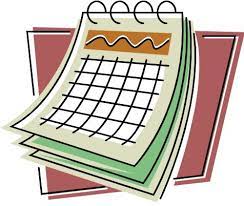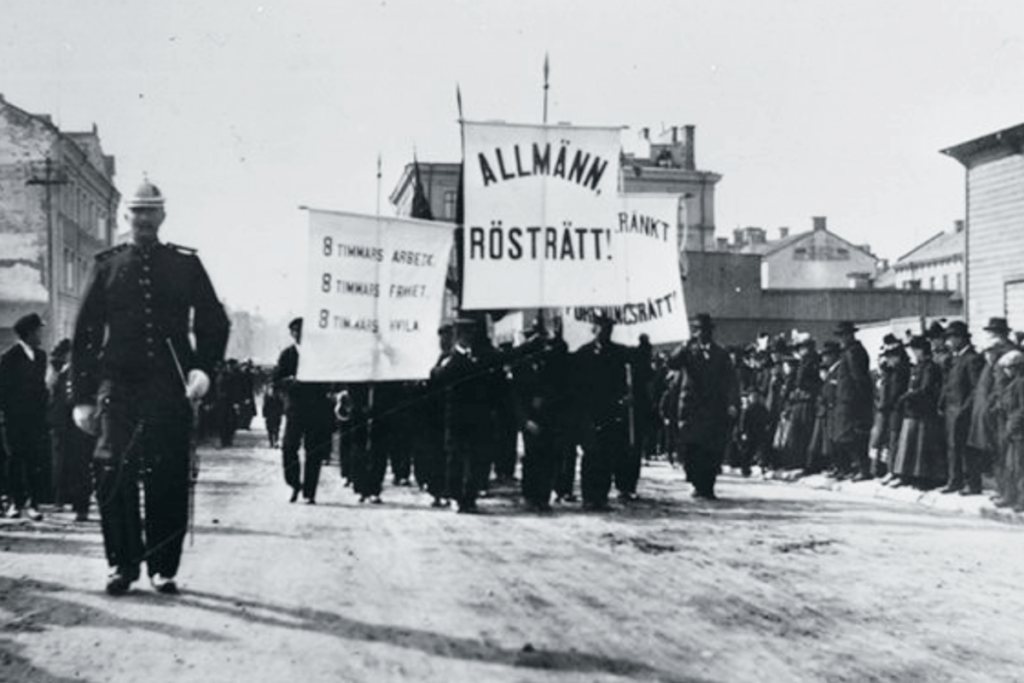
Working days per year 2023
In general, when you talk about the number of working hours per month, you usually say 160, or if you talk about the number of working days per year in 2023, you usually say 250, which is often not quite right. This year (2023), for example, there are between 152 and 184 working hours with an average of 169 hours per month or 253 working days (112 days off!). Here in the table below, you can see exactly how many working days, working hours, number of Saturdays and Sundays and other days off, for example red days, Midsummer's Eve, Christmas Eve and New Year's Eve. On the occasions that a red day coincides with a Saturday or Sunday, it is counted in the Sat & Sun column. We also expect an eight-hour working day. Which days in Sweden count as holidays are regulated in the following Lag (1989: 253) "The Public Holidays Act". The majority are free on the following holidays, even if they happen to coincide with a normal weekday:
- New Year's Eve
- Christmas Eve
- Easter Day and Pentecost
- New Year's Day and Thirteenth Day of Christmas
- May 1
- Christmas Day and Christmas Eve
- Good Friday and Easter Monday
- Ascension Day
- Sweden's National Day
- Midsummer Day
- All Saints Day
- Midsummer Eve
Feel free to check out our calendar here on the right, which contains information such as e.g. name days and a little history about what happened on that particular day.
| Month | Working days | Working hours | Sat & Sun. | Others |
|---|---|---|---|---|
| January | 22 | 176 | 9 | 1 |
| February | 20 | 160 | 8 | 0 |
| March | 23 | 184 | 8 | 0 |
| April | 18 | 144 | 10 | 3 |
| May | 21 | 168 | 8 | 2 |
| June | 20 | 160 | 8 | 2 |
| July | 21 | 168 | 10 | 0 |
| August | 23 | 184 | 8 | 0 |
| September | 21 | 168 | 9 | 0 |
| October | 22 | 176 | 9 | 0 |
| November | 22 | 176 | 8 | 0 |
| December | 19 | 152 | 10 | 2 |
| Total annual working hours | 252 | 2016 | 105 | 10 |
| Average / Month | 21 | 168 | 8.75 | 0.83 |
New Year's Eve
New Year's Eve is celebrated in many countries in different ways
New Year's Eve is a holiday celebrated in many countries around the world. In Sweden, New Year's Eve is celebrated on December 31, and New Year's Day on January 1. New Year's Eve is one of the most popular holidays in Sweden, and it is common for families and friends to gather to celebrate together. There are different traditions for how to celebrate New Year's Eve, but the most common is to watch TV or go out and listen to music. New Year's Eve often ends with launching rockets or fireworks at midnight. This is a tradition that has its origins in Roman times, when braziers were lit in the square to scare away evil spirits. Today, the shooting of rockets and fireworks is merely a symbolic gesture, but it is still a very popular way to ring in the new year.In some countries it is common to dance, eat and drink during the evening
In some countries it is common to dance, eat and drink during the evening. People drink New Year's drinks and eat New Year's food. There is also a New Year's dinner and New Year's supper. All these traditions have their own stories. Dancing, eating and drinking are common New Year's Eve activities in many countries around the world. People drink special New Year's drinks and eat traditional New Year's food. They also eat special New Year's meals such as New Year's dinner and New Year's Eve. In some countries, it is also customary to exchange New Year's gifts with family and friends. Regardless of the specific traditions, the celebration of the New Year is a cherished custom in many cultures.Other countries use New Year's Eve to watch fireworks or light them themselves
In other countries, they prepare for the New Year in different ways. In Japan, people light lanterns and burn firecrackers to scare away evil spirits. In South America it is common to party all night and the fireworks are set off at midnight. In the Philippines, people celebrate by shooting off fireworks, and in Southeast Asia firecrackers were used in the past to scare pests away from strawberries. Today, however, people celebrate more with laser shows and fireworks in the city, instead of firecrackers on the strawberries. The differences between how New Year's Eve is celebrated around the world are great, but all parts of the traditions have their own positive aspects. The laser show in the city is seen by many, the lanterns and firecrackers scare away evil spirits and the fireworks entertain in a happy way. All traditions thus have their own positive aspects that contribute to a pleasant weekend.There is no real rule for how to celebrate New Year's Eve
How do you usually celebrate New Year's Eve? There is no real rule for how to celebrate New Year's Eve. people usually do different things on New Year's Eve. Some people go out and celebrate with friends, while other people stay home and celebrate with their family. Some people eat special dinners, while others just eat the usual. Whatever you do on New Year's Eve, remember that it's a day to celebrate and have fun.Have a nice New Year's Eve!
Have a great New Year's Eve, everyone! I hope you all have a wonderful evening, filled with lots of fun and laughter. Whether you stay up to watch the fireworks or go to the party, I hope you have fun and have a good time. We wish you a happy and successful new year! I wish you all the best in the coming year. Happy New Year!May 1

May 1
This day has been celebrated since 1890 and stems from the demonstrations of the labor movement. In 1890, the Second International required an eight-hour workday. The Second International was an organization formed in Paris, but the demonstrations also spread to Sweden in 1890. The first of May has been a public holiday in Sweden since 1939. This day is one of the two (together with the national day) festivals that are considered non-bourgeois, ie without connection to the Church of Sweden. The first of May has historically not only been to demonstrate for the rights of the worker, but also for other purposes such as demonstrations of sobriety etc.
Before the Industrial Revolution, May Day was also celebrated as a day, the first day of summer. It was a day when the animals were let out to pasture, the village team chose an elder and they took joint initiatives to review farms, fences and finances. The pre-industrial celebration of the first of May ended with a party, as well as drinking marrow from a bone, to gather strength.
The most notable symbol of the first of May is the cornflower. This was first sold in Gothenburg in 1907. Flowers themselves have a positive, life-giving symbolism. The money from the sale is historical and still goes to charity, in most cases to vulnerable children.
One reason we celebrate May Day is the Haymarket Massacre, which took place in Chicago in 1886. At the demonstration, workers protested for just an 8-hour workday but met strong and violent opposition from police. Overall, the first of May is a holiday that is celebrated a little differently depending on where you are in the country. You choose to party, play games or demonstrate. The overarching theme is at least for the people to unite in a public place in the hope of showing the ruling powers that they have a voice that wants to be heard.

